Ecosistema terrestre animales: Ecosistemas terrestres; tipos, flora, fauna y características
Ecosistemas terrestres; tipos, flora, fauna y características
Qué es el ecosistema terrestre y cuales son sus características. Explicamos de forma sencilla las diferentes clases de ecosistemas terrestres, los tipos, sus animales y vegetación o cuáles son sus principales cualidades.
La mayoría de seres vivos alrededor del planeta, sea fauna o vegetación, están adaptados para un hábitat donde predomina el terreno o suelo. Estas zonas se denominan ecosistemas terrestres dónde de la actividad de los seres vivos se desarrolló sobre la superficie de la tierra llamada biosfera.
En contraste al acuático, en el ecosistema terrestre los individuos presentan peculiaridades considerablemente más variadas, esto es debido a los abundantes factores que condicionan a las especies. Entre estos, los más esenciales son: la disponibilidad de agua, la radiación solar, luz y nutrientes.
Ejemplo imagen ecosistema terrestre
Otra característica es la necesidad que tienen, tanto los vegetales como animales, de agua para la hidratación de sus organismos, con lo que sin ella no podrían sobrevivir.
Recuerda que hay tres principales ecosistemas en la Tierra, que incluyendo el que estamos estudiando son (Se puede pinchar en la imagen para más información):
Menú contenido:
- Qué es el ecosistema terrestre
- Tipos
- 1.- Desiertos
- 2.- Páramos
- 3.- Sabanas
- 4.- Bosques
- El bosque tropical
- El bosque andino
- Qué tipo de animales hay en el ecosistema terrestre
Qué es el ecosistema terrestre
Son aquellos distintos hábitats terrestres alrededor de la Tierra en el que los seres vivos, animales y plantas viven en el suelo y el subsuelo. La flora y fauna se desarrolla en el propio suelo.
Es uno de los tipos de hábitat biológicamente más diversos y ricos qué dependen de la cantidad de la humedad, la latitud y altitud o la temperatura. Estos últimos factores determinará su clasificación.
Tipos
Aunque existen muchas desviaciones en lo que son las tipologías y su clasificación.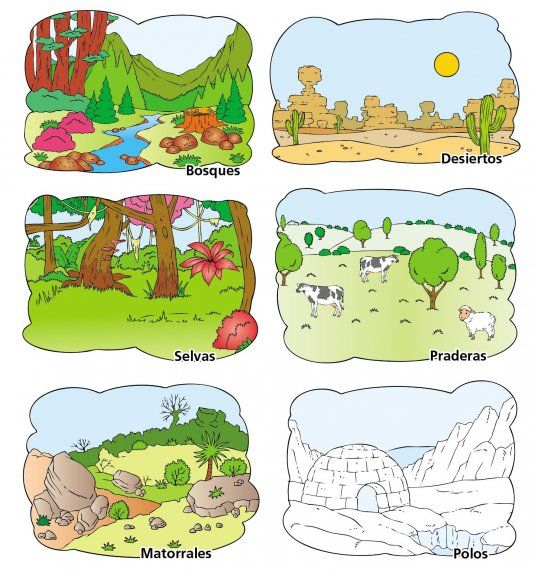 Ahora vamos a enumerar cuales son los principales ecosistemas terrestres que podemos encontrar en la Tierra:
Ahora vamos a enumerar cuales son los principales ecosistemas terrestres que podemos encontrar en la Tierra:
- Desiertos
- Paramos
- Sabanas
- Bosques
Para entender mejor su clasificación añadimos un breve esquema de los tipos de ecosistemas terrestres en:
Cuáles son los tipos de ecosistemas terrestres más comunes
Aunque aportamos más información en el artículo, para profundizar, pinchar en las imágenes siguientes para ir a la sección correspondiente:
1.- Desiertos
Las diferentes tipos de desiertos del mundo se identifican por presentar unas altas temperaturas en el día y bajas de noche, otros factores característicos de los desiertos son la humedad reducida y la evidente escasa precipitación en la mayoría de zonas desérticas.
Principalmente se clasifican en dos tipologías:
- Arbustos de hojas escasas y duras
- Vegetación de hojas carnosas, son los típicos Cactus
La flora en las zonas desérticas a lo largo del tiempo se han ido adaptando a la climatología con diferentes técnicas de supervivencia.
Las hojas reducidas y duras resisten la supresión de agua por transpiración excesiva, al tiempo que los conocidos cactus con sus hojas sustanciosas y carnosas, guardan grandes cantidades de líquido, y sus espinas ofrecen resistencia a la pérdida del mismo.
Aunque aparentemente las imágenes de desérticos no presenta mucha vida, en realidad se pueden localizar ciertos mamíferos, muchas clases de reptiles, aves, mariposas…etc.
2.- Páramos
Las zonas de páramos son equivalentes a las tundras en algunos países. Se identifican por presentar aire frío, nieves y neblinas la mayoría del año o suelos áridos.
La flora está constituida por vegetales perennes, plantas herbáceas, arbustos y árboles enanos, musgos , líquenes y ciertos pastos. Entre los animales se pueden localizar palomas, osos, venados, patos, anfibios, reptiles, roedores o aves.
Ejemplo imagen Páramo
Los páramos de Argentina son muy conocidos donde las plantas y seres que habitan la región del páramo, principalmente presentan adaptaciones para resguardarse del frío, como; bastante pelo y vello; las hojas de los vegetales están tupidas con pelusas abrigadas y finas.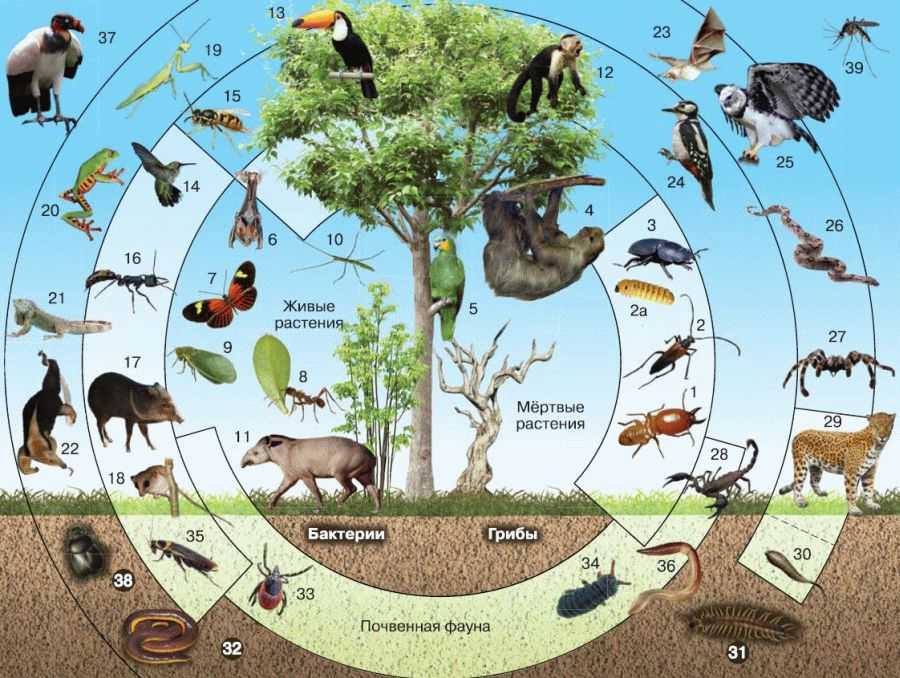
3.- Sabanas
Las sabanas son zonas formadas por grandes praderas con escaso arbolado, donde prevalecen los pastizales , gramíneas o plantas de consistencia herbácea. Entre la fauna animal se pueden localizar mamíferos, ganados, roedores, reptiles o aves.
En la sabana sobresale la ganadería, puesto que son zonas perfectas para la cría y desarrollo de todo género de ganado. Tiene dos temporadas de lluvias bastante claras y necesarias para la vida animal y vegetal de estas zonas.
Actualmente por la poca conciencia y el desarrollo urbano descontrolado de las ciudades, están ocupando gran parte de las sabanas de alrededor del mundo.
4.- Bosques
Los bosques se definen como aquellas zonas “superbobladas” de árboles, arbustos y matorrales, caracterizados por su húmedos y con temperaturas que oscilan entre los veinticuatro grados. Los organismos y animales que existentes son variadísimos y exóticos tanto en fauna como en vegetación.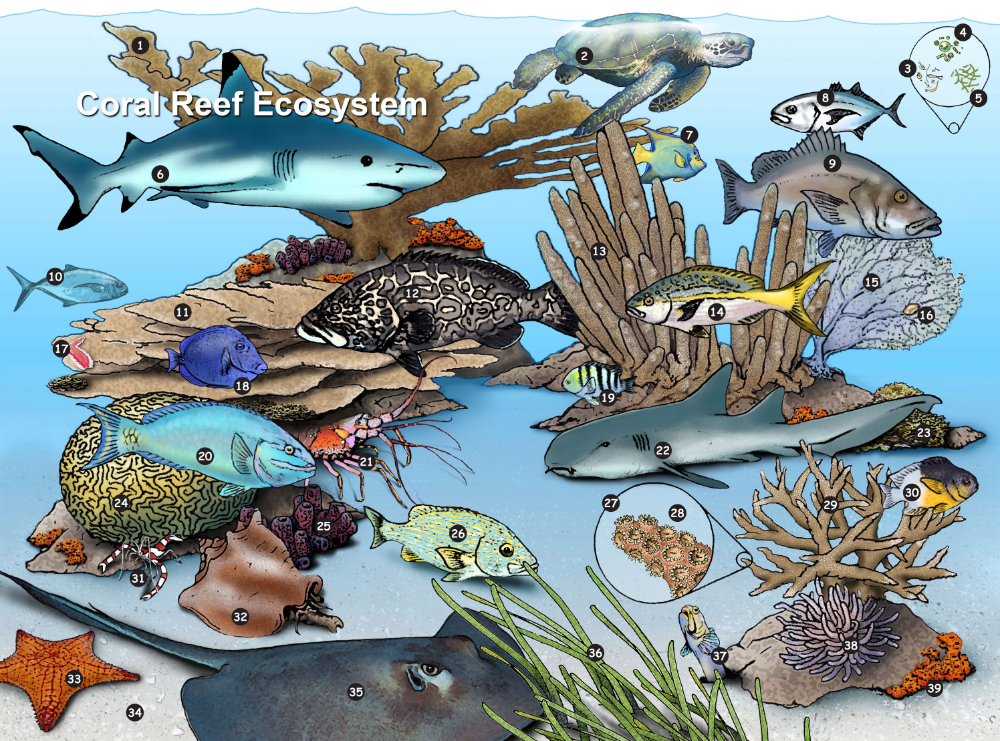
Bosque
La verdad que existen múltiples géneros de bosques, en dependencia del tiempo de la zona, de la situación geográfica y peculiaridades prácticamente de cada países. Entre aquéllos que sobresalen y podemos distinguir claramente son:
El bosque tropical
El ecosistema tropical lluvioso se identifican por presentar árboles con hojas anchísimas y verdes, con zonas de lluvias a lo largo de toda la temporada del año, alta humedad y temperatura, donde también predominan las inundaciones.
El bosque tropical presenta una flora muy exótica y exuberante, en lo que se refiere a los animales, podemos encontrar una gran pluralidad de anfibios , reptiles y también multiples insectos. (Podemos ver más información desde la selva tropical y sus animales o vegetación)
El bosque andino
La percepción del bosque andino es que están formados por cinturones de bosques en la “zona andina”, con temperatura normalmente tibias o bien frías, se distribuyen en las partes próximas al páramo.
En los bosques andinos podemos encontrar una sucesión de flora como palmeras, leguminosas , helechos, animales del estilo de osos hormigueros, venados, ardillas, puerco espines, conejos, zorros, y aves y una diversidad de pastos generosa.
Qué tipo de animales hay en el ecosistema terrestre
Al igual que el hábitat acuático, los animales terrestres pueden vivir en diferentes regiones. Sus cuerpos se han adaptado y están preparados para arrastrarse, correr, prepara, caminar o volar, según el lugar del planeta en el que vivan.
Los animales terrestres necesitan del oxígeno para vivir; en su mayoría tienen pulmones y se alimentan o de otros animales de menor tamaño normalmente o de plantas.
Algunos son muy pequeños y otros de gran tamaño. También podemos encontrar una fauna variada que al nacer pueden valerse por sí mismos y otros qué son mucho más dependientes y tienen que ser ayudados por sus padres para sobrevivir.
Pradera
Principalmente los animales de los ecosistemas terrestres se diferencian entre sí por la composición interna de su cuerpo hola esto dura corporal y qué determina en mayor medida sus funciones vitales. Serían los vertebrados o invertebrados.
Serían los vertebrados o invertebrados.
- Animales vertebrados: Son aquellos que tienen una columna vertebral o con algún tipo de estructura cartilaginosa o ósea. El ejemplo perfecto serían los mamíferos (león, caballo…etc)
- Animales invertebrados: Son aquellos que no tienen ningún tipo de estructura interna. El ejemplo perfecto serían los gusanos, por ejemplo.
También suelen clasificarse según su dieta alimentaria, es decir, según el tipo de nutrientes que comen para vivir; carnívoros, hervíboros y omnívoros…
Carnívoros; Es aquella fauna o animales que se alimentan de la carne de donde extraen sus nutrientes y energía para vivir. Sporting de un aparato más complejo que los herbívoros o los omnívoros y más musculoso, además de colmillos y garras que le permiten tanto cazar cómo comer de una forma más sencilla. Ejemplos representativos tendríamos los leones, los lobos…etc.
Sabana
Herbívoros; Son aquellos que se alimentan únicamente de vegetación y plantas por lo que tienes un estómago mucho más simple con la diferencia que los procesos digestivos son más la y complejos para consumir los nutrientes necesarios en su alimentación. Como ejemplo estaría en las cabras, los elefantes, los caballos…etc.
Como ejemplo estaría en las cabras, los elefantes, los caballos…etc.
Omnívoros: Son los animales terrestres que tiene una dieta mixta, que consumen tanto vegetales como carne, por lo que tienen un aparato digestivo más desarrollado que los herbívoros y por ello pueden adaptarse mejor a diferentes tipos de ecosistemas. Como ejemplos representativos tendríamos las avestruces, los cerdos, osos, los erizos…etc.
Si te ha gustado el artículo, compártelo!
Ecosistema terrestre – EcuRed
Ecosistema terrestre. Son aquellos distintos hábitats terrestres alrededor de la tierra en el que los seres vivos, animales y plantas viven en el suelo y el subsuelo. La flora y fauna se desarrolla en el propio suelo. Es uno de los tipos de hábitat biológicamente más diversos y ricos qué dependen de la cantidad de la humedad, la latitud y altitud o la temperatura. Estos últimos factores determinará su clasificación.
Sumario
- 1 Ambiente
- 2 Tipos
- 2.
 1 Desiertos
1 Desiertos - 2.2 Páramos
- 2.3 Sabanas
- 2.4 Bosques
- 2.
- 3 Tipo de animales que hay en el ecosistema terrestre
- 4 Fuente
Ambiente
Estos ecosistemas representan el 20% de los ambientes presentes en el planeta Tierra y van asociándose tanto al suelo; como al aire. En estos entornos hay mayor probabilidad para vivir debido a que logran encontrarse muchos más alimentos y demás elementos compatibles con la vida.
Tanto los distintos animales como las especies vegetales en los ecosistemas terrestres van acoplándose efectivamente; según lo que requieran para subsistir y de ser necesario; también van incentivando a su organismo a tener cambios y así poder luchar con las adversidades que en ocasiones se pueden presentar de acuerdo con el medio ambiente.
Tipos
Los principales ecosistemas terrestres que podemos encontrar en la tierra:
Desiertos
Las diferentes tipos de desiertos del mundo se identifican por presentar unas altas temperaturas en el día y bajas de noche, otros factores característicos de los desiertos son la humedad reducida y la evidente escasa precipitación en la mayoría de zonas desérticas.
Principalmente se clasifican en dos tipologías:
- Arbustos de hojas escasas y duras
- Vegetación de hojas carnosas, son los típicos Cactus
Páramos
Las zonas de páramos son equivalentes a las tundras en algunos países. Se identifican por presentar aire frío, nieves y neblinas la mayoría del año o suelos áridos.
La flora está constituida por vegetales perennes, plantas herbáceas, arbustos y árboles enanos, musgos, líquenes y ciertos pastos. Entre los animales se pueden localizar palomas, osos, venados, patos, anfibios, reptiles, roedores o aves.
Los páramos de Argentina son muy conocidos donde las plantas y seres que habitan la región del páramo, principalmente presentan adaptaciones para resguardarse del frío, como; bastante pelo y vello; las hojas de los vegetales están tupidas con pelusas abrigadas y finas.
Sabanas
Las sabanas son zonas formadas por grandes praderas con escaso arbolado, donde prevalecen los pastizales, gramíneas o plantas de consistencia herbácea.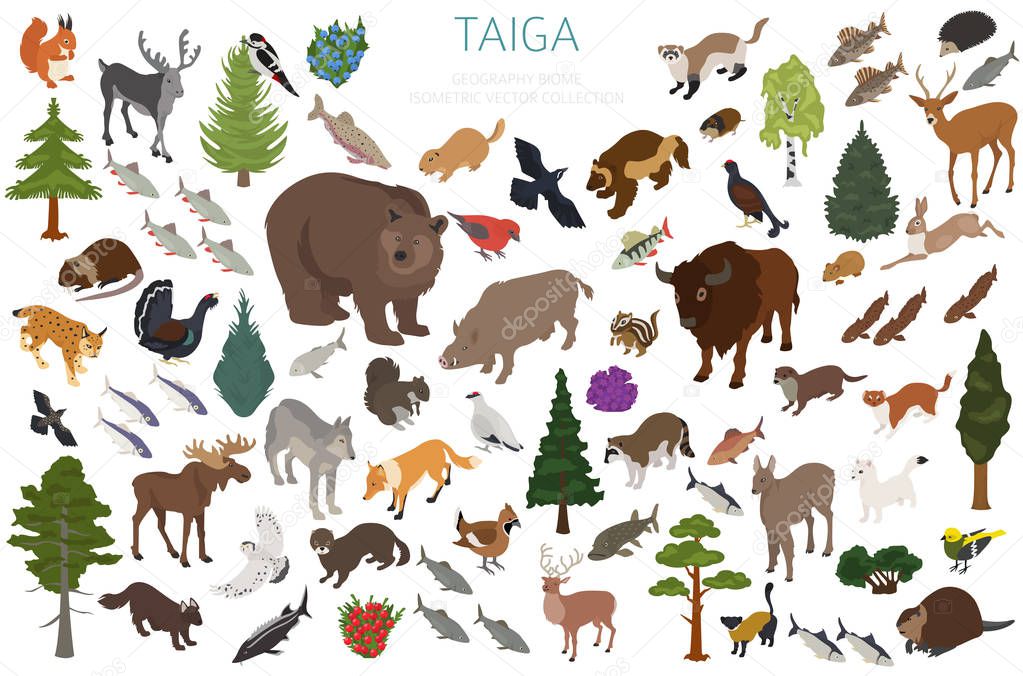 Entre la fauna animal se pueden localizar mamíferos, ganados, roedores, reptiles o aves.
Entre la fauna animal se pueden localizar mamíferos, ganados, roedores, reptiles o aves.
En la sabana sobresale la ganadería, puesto que son zonas perfectas para la cría y desarrollo de todo género de ganado. Tiene dos temporadas de lluvias bastante claras y necesarias para la vida animal y vegetal de estas zonas.
Actualmente por la poca conciencia y el desarrollo urbano descontrolado de las ciudades, están ocupando gran parte de las sabanas de alrededor del mundo.
Bosques
Los bosques se definen como aquellas zonas “superbobladas” de árboles, arbustos y matorrales, caracterizados por su húmedos y con temperaturas que oscilan entre los veinticuatro grados. Los organismos y animales que existentes son variadísimos y exóticos tanto en fauna como en vegetación.
La verdad que existen múltiples géneros de bosques, en dependencia del tiempo de la zona, de la situación geográfica y peculiaridades prácticamente de cada país. Entre aquéllos que sobresalen y podemos distinguir claramente son:
- El bosque tropical
El ecosistema tropical lluvioso se identifican por presentar árboles con hojas anchísimas y verdes, con zonas de lluvias a lo largo de toda la temporada del año, alta humedad y temperatura, donde también predominan las inundaciones.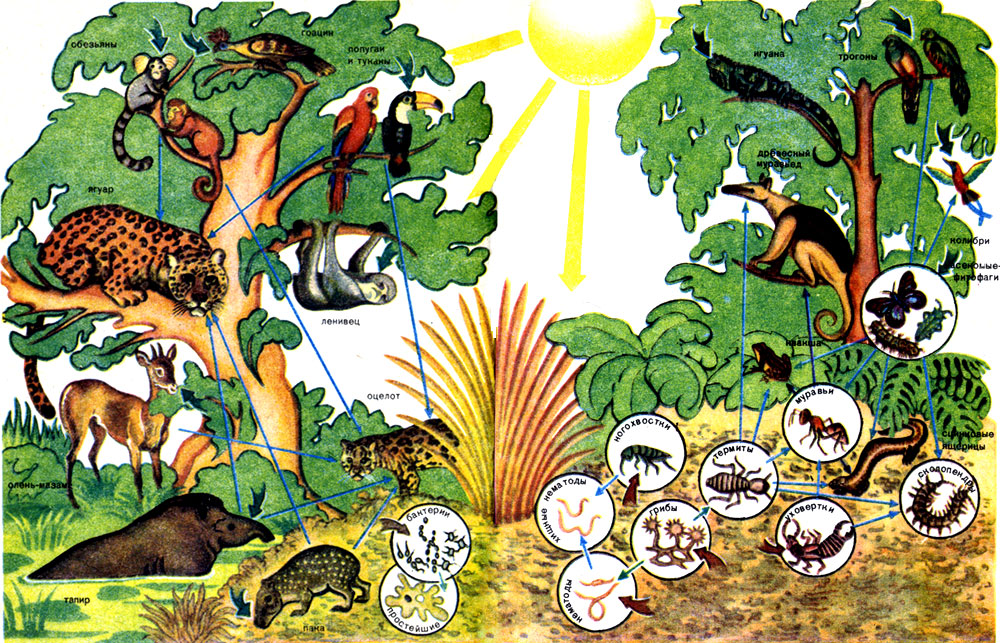
El bosque tropical presenta una flora muy exótica y exuberante, en lo que se refiere a los animales, podemos encontrar una gran pluralidad de anfibios , reptiles y también multiples insectos. (Podemos ver más información desde la selva tropical y sus animales o vegetación)
- El bosque andino
La percepción del bosque andino es que están formados por cinturones de bosques en la “zona andina”, con temperatura normalmente tibias o bien frías, se distribuyen en las partes próximas al páramo.
En los bosques andinos podemos encontrar una sucesión de flora como palmeras, leguminosas , helechos, animales del estilo de osos hormigueros, venados, ardillas, puerco espines, conejos, zorros, y aves y una diversidad de pastos generosa.
Tipo de animales que hay en el ecosistema terrestre
Al igual que el hábitat acuático, los animales terrestres pueden vivir en diferentes regiones. Sus cuerpos se han adaptado y están preparados para arrastrarse, correr, prepara, caminar o volar, según el lugar del planeta en el que vivan.
Los animales terrestres necesitan del oxígeno para vivir; en su mayoría tienen pulmones y se alimentan o de otros animales de menor tamaño normalmente o de plantas.
Algunos son muy pequeños y otros de gran tamaño. También podemos encontrar una fauna variada que al nacer pueden valerse por sí mismos y otros qué son mucho más dependientes y tienen que ser ayudados por sus padres para sobrevivir.
Principalmente los animales de los ecosistemas terrestres se diferencian entre sí por la composición interna de su cuerpo hola esto dura corporal y qué determina en mayor medida sus funciones vitales. Serían los vertebrados o invertebrados.
- Animales vertebrados: Son aquellos que tienen una columna vertebral o con algún tipo de estructura cartilaginosa o ósea. El ejemplo perfecto serían los mamíferos (león, caballo…etc)
- Animales invertebrados: Son aquellos que no tienen ningún tipo de estructura interna. El ejemplo perfecto serían los gusanos, por ejemplo.
También suelen clasificarse según su dieta alimentaria, es decir, según el tipo de nutrientes que comen para vivir.
- Carnívoros; Es aquella fauna o animales que se alimentan de la carne de donde extraen sus nutrientes y energía para vivir. Sporting de un aparato más complejo que los herbívoros o los omnívoros y más musculoso, además de colmillos y garras que le permiten tanto cazar cómo comer de una forma más sencilla. Ejemplos representativos tendríamos los leones, los lobos…etc.
- Herbívoros; Son aquellos que se alimentan únicamente de vegetación y plantas por lo que tienes un estómago mucho más simple con la diferencia que los procesos digestivos son más la y complejos para consumir los nutrientes necesarios en su alimentación. Como ejemplo estaría en las cabras, los elefantes, los caballos…etc.
- Omnívoros: Son los animales terrestres que tiene una dieta mixta, que consumen tanto vegetales como carne, por lo que tienen un aparato digestivo más desarrollado que los herbívoros y por ello pueden adaptarse mejor a diferentes tipos de ecosistemas. Como ejemplos representativos tendríamos las avestruces, los cerdos, osos, los erizos…etc.

Fuente
- Ecosistema terrestre. Disponible en: www.juventudtecnica.cu. Consultado el 4 de diciembre de 2018.
- Ecosistema terrestre. Disponible en: ecosistemas.ovacen.com. Consultado el 4 de diciembre de 2018.
Beginner’s Guide to Ecosystem Restoration
This phrase has been on the lips of scientists, officials and environmental activists a lot in the past few months – ecosystem restoration. This year on June 5, World Environment Day will officially kick off the United Nations Decade on Ecosystem Restoration, a 10-year effort to halt and reverse the decline of the natural world.
Are you curious about what an ecosystem is and how to restore it?
Answer to the first question: an ecosystem is a place where plants, animals and other organisms are interconnected with the landscape around them and form a web of life.
Ecosystems can be as big as a forest or as small as a pond. Many of them are critical to human society, providing people with water, food, building materials and a host of other essentials.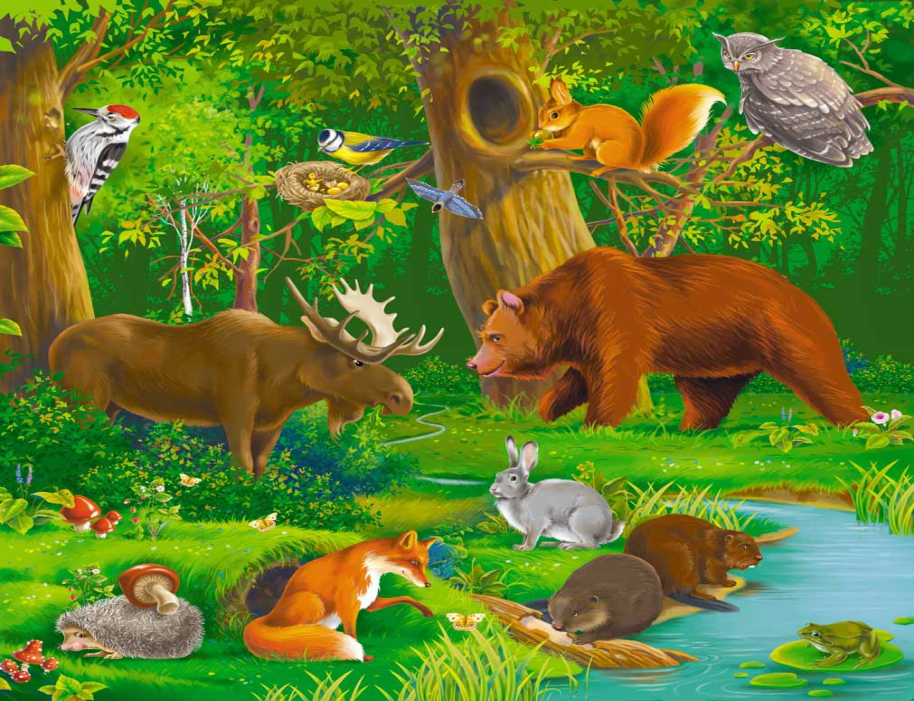 They also provide conditions for life on the planet, such as climate protection and biodiversity conservation.
They also provide conditions for life on the planet, such as climate protection and biodiversity conservation.
However, in recent decades, human thirst for resources has brought many ecosystems to a critical state.
Here are the eight main types of ecosystems and some steps you can take to bring them to life. To learn more about how to improve local ecosystems and join the #generation of recovery, see the UN Decade’s Ecosystem Restoration Handbook is a guide to restoring the planet.
Agricultural land
Overuse, soil erosion, excess fertilizers and pesticides are depleting many agricultural lands. Ways to restore them include reducing tillage, using more natural fertilizers and pest control, and growing more diverse crops, including trees. These steps could restore soil carbon stocks, making them more fertile so that countries can feed their growing populations without using even more land resources. The restoration of farmland also creates habitat for wildlife.
Did you know? Nitrogen in fertilizers used in industrial agriculture not only pollutes the air and water, but also contributes to climate change.
Forests
Forests and trees are being cut down to satisfy humanity’s thirst for land and natural resources. Logging, felling trees for firewood, pollution, invasive pests and wildfires damage the remnants of forests. Restoring forest ecosystems means replanting and reducing pressure on forests so that trees can grow naturally again. The provision of food systems is a major cause of deforestation. Rethinking the way we grow and consume food will help reduce pressure on forests. Degraded and disused agricultural land can be an ideal place for reforestation, which can also mean creating patches of forest and woodland in landscapes that include vibrant farms and villages.
Did you know? Forests are home to 80 percent of the world’s amphibians, as well as most birds and mammals.
Lakes and rivers
Safe and plentiful water has become a luxury. Freshwater ecosystems have been degraded by pollution, overfishing and infrastructure, as well as ever-increasing water withdrawals for irrigation, industry and households. Restoration means stopping pollution, reducing and treating waste, regulating the demand for water and fish, and restoring vegetation above and below water.
Did you know? Many species of fish feed on insects, so humanity can restore rivers by allowing insect-friendly plants to grow on their banks.
Grasslands and savannas
Shrubs, grasslands and savannas are being pressured by overgrazing and erosion into agricultural land and infested with alien species. People can help them recover by clearing them of woody vegetation and reseeding them with native grass varieties. Disappeared plants and animals can be repopulated here and protected until they take root. Pastoralists and other users should be actively involved in sustainable management plans for these ecosystems.
Pastoralists and other users should be actively involved in sustainable management plans for these ecosystems.
Did you know? Grasslands and savannas is where humans evolved millions of years ago.
Mountains
In mountainous regions, clearing slopes for crops or housing can cause dangerous erosion and pollute rivers at their source. High temperatures force species, ecosystems and people to adapt or move. Humanity can counter this trend by reviving forests and restoring the protection they provide against avalanches, landslides and floods. Officials may plan to build dams and roads to avoid destroying rivers and other wildlife habitats. Agricultural practices such as agroforestry can be more resilient to climate change.
Did you know? At least 600 glaciers have disappeared in recent decades, affecting the water supply for billions of people living downstream.
Oceans and coasts
Marine ecosystems are being polluted, affected by climate change and overexploitation. But the solutions to these problems are as simple as the threats themselves. Governments and communities can make fishing and mangrove use more sustainable. Sewage and other waste can be treated properly, preventing plastic debris from entering open water bodies. Coral reefs, mangroves and algae must be actively protected and carefully restored so that the oceans can continue to provide billions of people around the world with resources.
But the solutions to these problems are as simple as the threats themselves. Governments and communities can make fishing and mangrove use more sustainable. Sewage and other waste can be treated properly, preventing plastic debris from entering open water bodies. Coral reefs, mangroves and algae must be actively protected and carefully restored so that the oceans can continue to provide billions of people around the world with resources.
Did you know? Seaweeds are the secret champions of climate conservation as they sequester carbon 35 times faster than rainforests.
Peatlands
Peatlands and their vast reserves of carbon and water are being drained into agricultural land, degraded by fire, overgrazing, pollution and peat mining. To avoid critical climate change, it is necessary to keep carbon in peatlands – in moisture and in the ground. At the same time, humanity must re-wet and restore many degraded peatlands, for example by closing drainage channels to stop emissions and protect rare plants and animals.
Did you know? Peatlands cover only 3 percent of the planet’s land mass but store almost one-third of all carbon in their soil.
Urban areas
Cities and towns may seem like deserts from an ecological point of view. Among houses, roads and factories, there is little room for vegetation. Waste and pollution endanger water channels, soil and air. But urban areas have enormous potential for recovery. Citizen groups and city governments can work to clean up water channels, grow bee-friendly plants, and create urban forest parks and other wildlife habitats in parks, schools, and other public spaces. Cutting the grass infrequently costs cities less and allows nature to thrive. Permeable sidewalks and wetlands protect against flooding and pollution. Contaminated industrial areas can be restored and turned into places for nature and recreation.
Did you know? Over 280 bird species have been recorded in New York’s Central Park.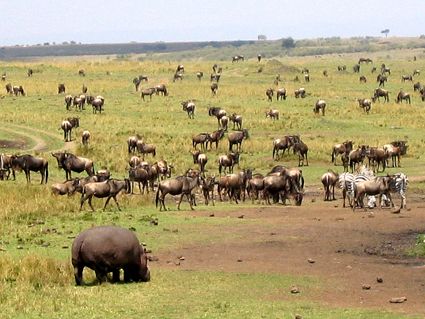
The United Nations Decade, led by the United Nations Environment Program and the Food and Agriculture Organization of the United Nations, will bring together political support, research and funding to massively scale up restoration to restore millions of hectares of terrestrial and aquatic ecosystems. Visit www.decadeonresturation.org for more information.
Russian geobotanist L.G. Ramensky in 1910 formulated the principle of the ecological individuality of species – a principle that is the key to understanding the role of biodiversity in the biosphere.
meters grow individuals of 5-6 species of trees, 5-7 species of shrubs, 2-3 species of vines, 20-30 species of herbaceous plants, 10-12 species of mosses and 15-20 species of lichens. All these species are ecologically individual, and in different seasons of the year, in different weather conditions, their photosynthetic activity varies greatly. The number of species of a similar life form, with similar requirements for the environment, living in one local ecosystem, one can judge how stable the conditions in this ecosystem are. In stable conditions, such species, as a rule, will be less than in unstable conditions. If weather conditions do not change for a number of years, then there is no need for a large number of species. In this case, the species is preserved, which, under these stable conditions, is the most optimal of all possible species of this flora. All the rest are gradually eliminated, unable to withstand competition with it.
In nature, we find a lot of factors or mechanisms that provide and maintain a high species diversity of local ecosystems. First of all, such factors include excessive reproduction and overproduction of seeds and fruits. In nature, seeds and fruits are produced hundreds and thousands of times more than is necessary to make up for the natural loss due to premature death and dying of old age. Thanks to adaptations to the spread of fruits and seeds over long distances, the rudiments of new plants fall not only on those areas that are favorable for their growth now, but also on those areas whose conditions are unfavorable for the growth and development of individuals of these species. Nevertheless, these seeds germinate here, exist in a depressed state for some time and die. General vegetation cover gene pool of landscape area – its flora-local ecosystems of this area are used most fully due to biodiversity pressure. At the same time, local ecosystems in terms of species become richer. During their formation and rearrangement, the ecological selection of suitable components is carried out from a larger number of applicants whose diagerms have got into a given habitat. Thus, the probability of forming an ecologically optimal plant community increases.
For example, anadromous fish, accumulating their biomass in the sea, go to spawn in the upper reaches of rivers and streams, where after spawning they die and become food for a large number of animal species (bears, wolves, many mustelid species, many birds, not to mention hordes of invertebrates). Stop entering the rivers of the Far East to spawn salmon, and in 5-10 years you will see how much the population of most animal species will change. The number of animal species will change, and, as a result, rearrangements in the vegetation cover will begin. The decrease in the number of predatory species of animals will lead to an increase in the number of herbivores. Having quickly undermined their food base, herbivorous animals will begin to die, and epizootics will spread among them. The number of herbivorous animals will decrease, and there will be no one to spread the seeds of some species and eat the biomass of other plant species. In a word, with the cessation of entry into the rivers of red fish in the Far East, a series of restructurings will begin in all parts of ecological systems that are hundreds and even thousands of kilometers away from the sea.
Diversity of species and diversity of life forms or ecobiomorph are not the same thing. The biodiversity of organisms in the biosphere is not limited to the diversity of taxa and diversity of ecobiomorphs of living organisms. |
 1 Desiertos
1 Desiertos
 Biodiversity ensures the resilience of ecosystems to external stresses and maintains a dynamic balance in them. The living from the non-living, first of all, differs by several orders of magnitude in its great diversity and the ability not only to preserve this diversity, but also to significantly increase it in the course of evolution. In general, the evolution of life on Earth can be viewed as a process of structuring the biosphere, a process of increasing the diversity of living organisms, forms and levels of their organization, a process of the emergence of mechanisms that ensure the stability of living systems and ecosystems in the constantly changing conditions of our planet. It is the ability of ecosystems to maintain balance, using the hereditary information of living organisms for this, that makes the biosphere as a whole and local ecosystems material-energy systems in the full sense.
Biodiversity ensures the resilience of ecosystems to external stresses and maintains a dynamic balance in them. The living from the non-living, first of all, differs by several orders of magnitude in its great diversity and the ability not only to preserve this diversity, but also to significantly increase it in the course of evolution. In general, the evolution of life on Earth can be viewed as a process of structuring the biosphere, a process of increasing the diversity of living organisms, forms and levels of their organization, a process of the emergence of mechanisms that ensure the stability of living systems and ecosystems in the constantly changing conditions of our planet. It is the ability of ecosystems to maintain balance, using the hereditary information of living organisms for this, that makes the biosphere as a whole and local ecosystems material-energy systems in the full sense.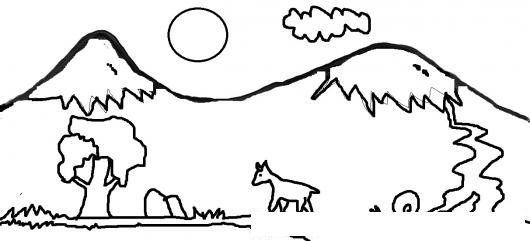 We see that many species live together in each ecosystem at the same time, but we rarely think about the ecological meaning of this. Ecological individuality of plant species living in the same plant community in the same ecosystem allows the community to quickly rebuild when external conditions change. For example, in a dry summer in this ecosystem, the main role in ensuring the biological cycle is played by individuals of species A, which are more adapted to life with a moisture deficit. In a wet year, individuals of species A are not at their optimum and cannot ensure the biological cycle in the changed conditions. In this year, individuals of species B begin to play the main role in ensuring the biological cycle in this ecosystem. The third year turned out to be cooler; under these conditions, neither species A nor species B can ensure the full use of the ecological potential of this ecosystem. But the ecosystem is rapidly rebuilding, as it contains individuals of species B, which do not need warm weather and photosynthesize well at low temperatures.
We see that many species live together in each ecosystem at the same time, but we rarely think about the ecological meaning of this. Ecological individuality of plant species living in the same plant community in the same ecosystem allows the community to quickly rebuild when external conditions change. For example, in a dry summer in this ecosystem, the main role in ensuring the biological cycle is played by individuals of species A, which are more adapted to life with a moisture deficit. In a wet year, individuals of species A are not at their optimum and cannot ensure the biological cycle in the changed conditions. In this year, individuals of species B begin to play the main role in ensuring the biological cycle in this ecosystem. The third year turned out to be cooler; under these conditions, neither species A nor species B can ensure the full use of the ecological potential of this ecosystem. But the ecosystem is rapidly rebuilding, as it contains individuals of species B, which do not need warm weather and photosynthesize well at low temperatures.
 These species seem to complement each other, making the plant community as a whole ecologically more optimal
These species seem to complement each other, making the plant community as a whole ecologically more optimal But both of them will not disappear from the ecosystem; when the previous conditions return, everything can be restored in the same proportions.
But both of them will not disappear from the ecosystem; when the previous conditions return, everything can be restored in the same proportions.  This happens as long as environmental conditions are stable. But if the conditions change, then the seedlings of species unusual for this ecosystem, previously doomed to death, begin to grow and develop here, going through a full cycle of their ontogenetic (individual) development. Ecologists say that in nature (read, in the biosphere) there are powerful pressure of life diversity on all local ecosystems.
This happens as long as environmental conditions are stable. But if the conditions change, then the seedlings of species unusual for this ecosystem, previously doomed to death, begin to grow and develop here, going through a full cycle of their ontogenetic (individual) development. Ecologists say that in nature (read, in the biosphere) there are powerful pressure of life diversity on all local ecosystems. As the number of hare increases, with some delay, the number of lynx begins to grow. By increasing its numbers, the lynx has a depressing effect on the hare population. At the same time, the number of hare is reduced, lynxes cannot provide themselves with food and leave this ecosystem, or die. The press from the side of the lynx decreases and the number of the hare increases. The fewer species of predators and species of herbivorous animals in the ecosystem, the sharper the fluctuations in their numbers, the more difficult it is for the ecosystem to maintain its balance. With a large number of prey species and predator species (see the previous diagram), fluctuations in numbers have a much smaller amplitude.
As the number of hare increases, with some delay, the number of lynx begins to grow. By increasing its numbers, the lynx has a depressing effect on the hare population. At the same time, the number of hare is reduced, lynxes cannot provide themselves with food and leave this ecosystem, or die. The press from the side of the lynx decreases and the number of the hare increases. The fewer species of predators and species of herbivorous animals in the ecosystem, the sharper the fluctuations in their numbers, the more difficult it is for the ecosystem to maintain its balance. With a large number of prey species and predator species (see the previous diagram), fluctuations in numbers have a much smaller amplitude. 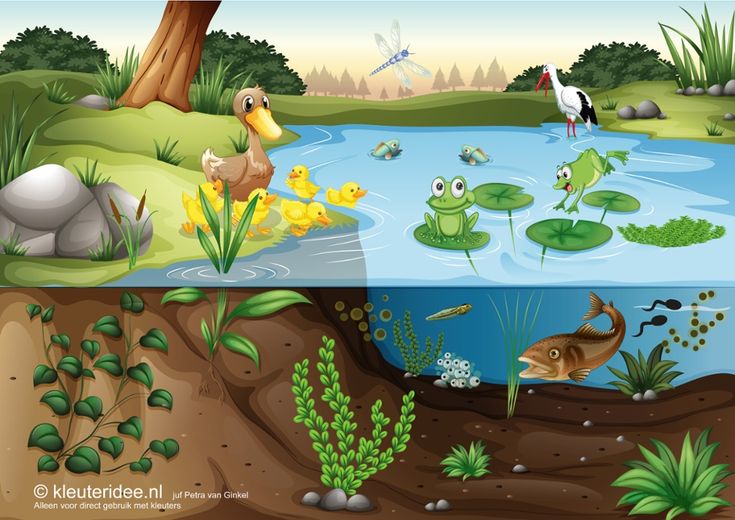 This applies not only to plants that lead an attached lifestyle, but even more so to animals that can move from one local ecosystem to another. Many animal individuals, not belonging specifically to any of the local ecosystems (biogeocenoses), nevertheless play an important ecological role and participate in ensuring the biological cycle in several ecosystems at once. Moreover, they can alienate biomass in one local ecosystem, and throw out excrement in another, stimulating the growth and development of plants in this second local ecosystem. Sometimes such a transfer of matter and energy from one ecosystem to another can be extremely powerful. This flow connects completely different ecosystems.
This applies not only to plants that lead an attached lifestyle, but even more so to animals that can move from one local ecosystem to another. Many animal individuals, not belonging specifically to any of the local ecosystems (biogeocenoses), nevertheless play an important ecological role and participate in ensuring the biological cycle in several ecosystems at once. Moreover, they can alienate biomass in one local ecosystem, and throw out excrement in another, stimulating the growth and development of plants in this second local ecosystem. Sometimes such a transfer of matter and energy from one ecosystem to another can be extremely powerful. This flow connects completely different ecosystems.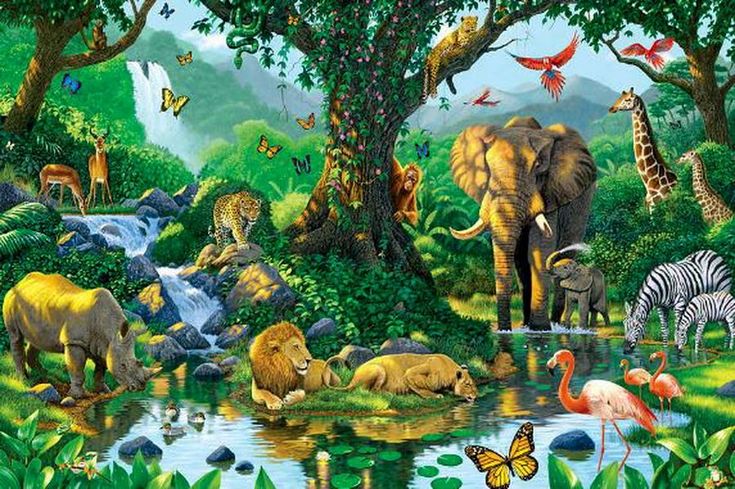 These animals feed on fish and discard their excrement in terrestrial ecosystems. Thus, the substance from the sea migrates to land deep into the mainland and is assimilated by plants and included in new chains of the biological cycle.
These animals feed on fish and discard their excrement in terrestrial ecosystems. Thus, the substance from the sea migrates to land deep into the mainland and is assimilated by plants and included in new chains of the biological cycle.
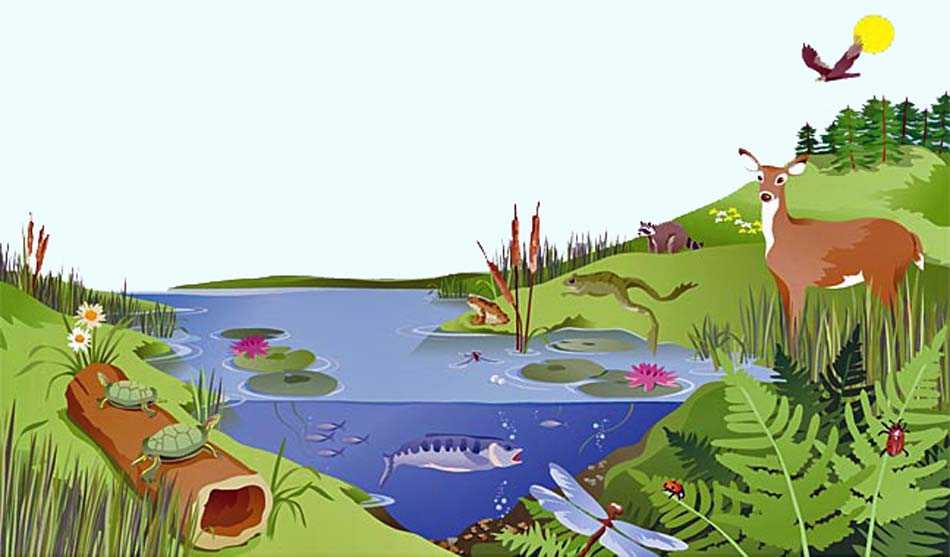 In this regard, with a powerful impact on ecosystems, great care is required and following the rule: “Before you have an impact on the ecosystem and bring it out of balance, measure seven times” and … do not cut off – refuse this impact. The 20th century has convinced us that it makes more sense to protect natural ecosystems by keeping them in balance than to remake these ecosystems in an attempt to optimize them.
In this regard, with a powerful impact on ecosystems, great care is required and following the rule: “Before you have an impact on the ecosystem and bring it out of balance, measure seven times” and … do not cut off – refuse this impact. The 20th century has convinced us that it makes more sense to protect natural ecosystems by keeping them in balance than to remake these ecosystems in an attempt to optimize them. I will demonstrate this with an example. In the meadow, species, genera and families of plants can live 2-3 times more than in the dark coniferous forest. However, in terms of ecobiomorphs and synusia, it turns out that the biodiversity of the dark coniferous forest as an ecosystem is much higher than the biodiversity of the meadow as an ecosystem. In the meadow, we have 2-3 classes of ecobiomorphs, and in the dark coniferous forest, 8-10 classes. There are many species in the meadow, but all of them belong either to the class of ecobiomorphs, perennial mesophytic summer-green grasses, or to the class of annual grasses, or to the class of green mosses. In the forest, different classes of ecobiomorphs are: dark coniferous trees, deciduous trees, deciduous shrubs, deciduous shrubs, perennial mesophytic summer green grasses, green mosses, epigeic lichens, epiphytic lichens.
I will demonstrate this with an example. In the meadow, species, genera and families of plants can live 2-3 times more than in the dark coniferous forest. However, in terms of ecobiomorphs and synusia, it turns out that the biodiversity of the dark coniferous forest as an ecosystem is much higher than the biodiversity of the meadow as an ecosystem. In the meadow, we have 2-3 classes of ecobiomorphs, and in the dark coniferous forest, 8-10 classes. There are many species in the meadow, but all of them belong either to the class of ecobiomorphs, perennial mesophytic summer-green grasses, or to the class of annual grasses, or to the class of green mosses. In the forest, different classes of ecobiomorphs are: dark coniferous trees, deciduous trees, deciduous shrubs, deciduous shrubs, perennial mesophytic summer green grasses, green mosses, epigeic lichens, epiphytic lichens. For example, we can get into an area that is entirely occupied by one local elemental ecosystem – a raised swamp, or a damp alder forest at the mouth of a large river. In another area on the same territory, we will meet at least 10-15 types of local elementary ecosystems. Ecosystems of coniferous-broad-leaved forests at the bottom of river valleys are regularly replaced here by ecosystems of cedar-oak mixed-shrub forests on the southern gentle slopes of mountains, larch-oak mixed-grass forests on the northern gentle slopes of mountains, spruce-fir forests in the upper part of the northern steep slopes of mountains and ecosystems steppe meadows and clump vegetation on the steep southern slopes of the mountains. It is not difficult to understand what is intra-landscape diversity of ecosystems is determined not only by the diversity of their constituent species and ecobiomorphs, but also by the diversity of the ecological background of the landscape , associated primarily with the diversity of landforms, the diversity of soils and underlying rocks.
For example, we can get into an area that is entirely occupied by one local elemental ecosystem – a raised swamp, or a damp alder forest at the mouth of a large river. In another area on the same territory, we will meet at least 10-15 types of local elementary ecosystems. Ecosystems of coniferous-broad-leaved forests at the bottom of river valleys are regularly replaced here by ecosystems of cedar-oak mixed-shrub forests on the southern gentle slopes of mountains, larch-oak mixed-grass forests on the northern gentle slopes of mountains, spruce-fir forests in the upper part of the northern steep slopes of mountains and ecosystems steppe meadows and clump vegetation on the steep southern slopes of the mountains. It is not difficult to understand what is intra-landscape diversity of ecosystems is determined not only by the diversity of their constituent species and ecobiomorphs, but also by the diversity of the ecological background of the landscape , associated primarily with the diversity of landforms, the diversity of soils and underlying rocks.